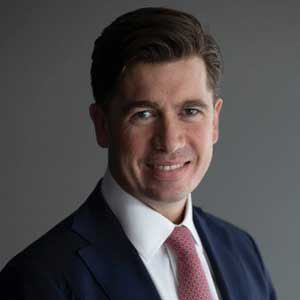Will there be an ultimate winner in the battery tech race?
Panelists at RBC’s inaugural Global Battery Value Chain Conference – representing companies working on competing types of battery tech – presented different visions of the future of battery technologies and their commercialization.
But there was agreement that a range of concepts have potential for adoption in different applications.
A multi-stranded development market
While EVs generally use lithium-ion batteries, solid-state batteries – which use a solid electrolyte as rather than liquid or polymer gel – have potential power, safety and cost advantages. However, they have so far proved hard to manufacture at scale.
Meanwhile, underlying chemistries also differ. NMC uses lithium, manganese, and cobalt oxide as cathode material, while LFP uses a lithium iron phosphate chemistry. And these are far from the only options, as Graeme Purdy, CEO of Ilika, pointed out.
“We hear about LFP that the Chinese have fantastically commercialized. Of course, most of the automotive industry uses NFC,” he said. “Then we’ve got some people using more exotic chemistry.
“So even now, with a technology that has been under development for 30 years, we’ve got quite a diversity of different chemistries. And I think the same will be true in the future.”
“Even now, with a technology that has been under development for 30 years, we’ve got a diversity of different chemistries.”
GRAEME PURDY, CEO, ILIKA
Meanwhile, end customers are tech-agnostic, said Will Tope, CTO at LiNa Energy. “The customer honestly couldn’t care less whether it’s got a solid-state electrolyte or XYZ – what the customer wants is performance and cost,” he declared.
His company is developing solid state sodium batteries for stationary storage, designed to be economical at longer durations than lithium ion. “We think lithium ion is going to be the workhorse, especially in stationary storage,” Tope said, “but there’s room for a few select technologies around the edge, to diversify.”
For Christian Rood, CEO of LeydenJar, the battle is about industrialization rather than tech type. “A new advanced battery technology needs to fit with the way gigafactories are now being made,” he said. “That makes drop-in or plug-in essential for new technologies.”
“A new advanced battery technology needs to fit with the way gigafactories are now being made.”
CHRISTIAN ROOD, CEO, LEYDENJAR
Multiple markets, varied applications
The commercial viability of solid-state batteries is a question on many investors’ minds. As panel facilitator Tom Narayen pointed out, some critiques suggest the technology is still a decade from commercialization at scale.
However, Purdy pointed to Ilika’s current sales of solid state batteries for medical applications. “We see that as being a market segment – admittedly not as big as automotive, but one that can be addressed with the price point that we can reach at the moment.”
Purdy said solid-state batteries was a broad term, covering a range of performance parameters and costs. Overall, he claimed solid state batteries could add 50 to 70% energy density and capacity compared to lithium ion: “That’s the prize that people are chasing.”
Rood took issue with this, claiming a similarly enhanced energy density for LeydenJar’s own lithium-ion cell, made with a pure silicon anode. But LeydenJar too is focusing on a smaller market for now, with the aim of serving automotive later.
“A lot of people are talking about automotive applications, because that’s where the growth is. Consumer electronics might not be growing that fast, but for us, deploying a 70% higher energy density, you can imagine there’s a lot of new applications and a lot of value,” he said.
Solving the lithium challenge
German developer Theion is pursuing another approach, making use of sulfur as an abundantly available cathode material. The company has spent years finding ways to overcome chemical reaction issues and gain the benefits of this technology, said CEO Ulrich Ehmes.
“We are combining this sulfur crystal battery with lithium anode for three times higher energy density for mobile applications, and we combine the same cathode with sodium for stationary application,” he said.
This approach also has the advantage of limiting the requirement for lithium. While lithium prices have dropped since their post-pandemic highs, the panelists recognized that supply of the commodity remains a critical issue.
“We need to quadruple the availability of lithium by the end of this decade, and that’s a monumental task for the mining industry,” said Tope. However, he predicted that current investment would ultimately pay off.
For now, his company, LiNa, is substituting sodium: “That’s where the opportunity exists, especially for sodium, to get tech out into the market, create a market share. Then you’ve been able to use this strain on the lithium ion supply chain to get over the hump of manufacturing scale-up and deployment.”
“We need to quadruple the availability of lithium by the end of this decade, and that’s a monumental task for the mining industry.”
WILL TOPE, CTO, LINA ENERGY
Tech advances can shave end prices
Asked to predict how battery costs will evolve, Purdy foresaw prices dipping below $100 per kilowatt hour in the coming years. Other panelists predicted lower prices for non-lithium based products, with Ehmes suggesting prices below €40 for mobile and around €30 for stationary applications.
While processing changes make only incremental changes to costs, Rood noted that new advances have the potential to achieve more significant efficiencies. For instance, higher energy density can achieve the same range while making EV batteries much smaller.
“I think people should realize that the disruptive effect of new technology can also have an effect on cost,” he said.
“The benchmark will always be competition from Asia.”
ULRICH EHMES, CEO, THEION
Purdy agreed, suggesting cost savings could arise from more complex changes, such as reducing the battery pack’s cooling system, or reducing the weight of the EV.
For any application, Ehmes said, safety, performance and cost would be critical factors for success. And the established players elsewhere in the world would evolve too: “The benchmark will always be competition from Asia,” he concluded.
Our Experts



